Abstract
An infrared-imaging system has been used to study the influence of gravity on the kinetics of first positive phototropism. The development of phototropic curvature of etiolated seedlings of Arabidopsis thaliana was measured in the absence of visible radiation. Following a pulse of blue light, stationary seedlings curved to a maximum of approximately 16° about 80 minutes after stimulation. The seedlings then curved upward again or straightened by about 6° during the subsequent 100 minutes. Seedlings rotated on a clinostat reached a similar maximum curvature following photostimulation. These seedlings maintained that curvature for 30 to 40 minutes before subsequently straightening to the same extent as the stationary seedlings. It is concluded that straightening is not a consequence of gravitropism, although gravity has some effect on the phototropism kinetics.
Full text
PDF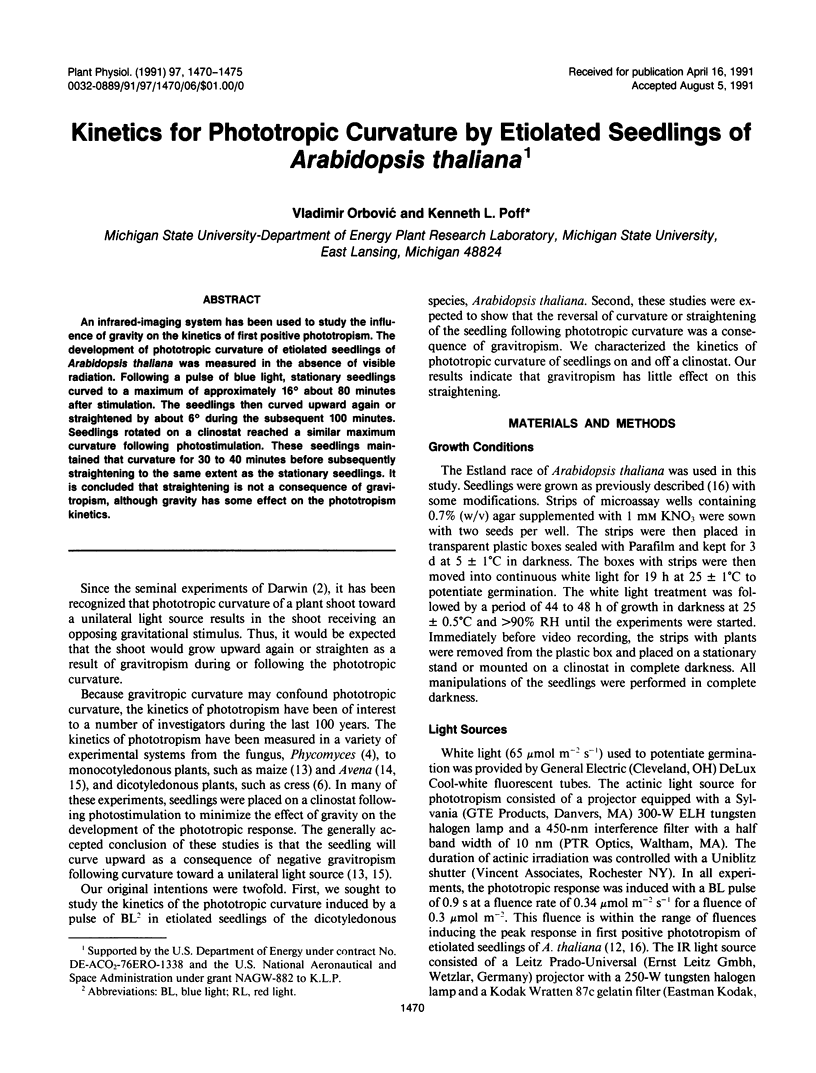
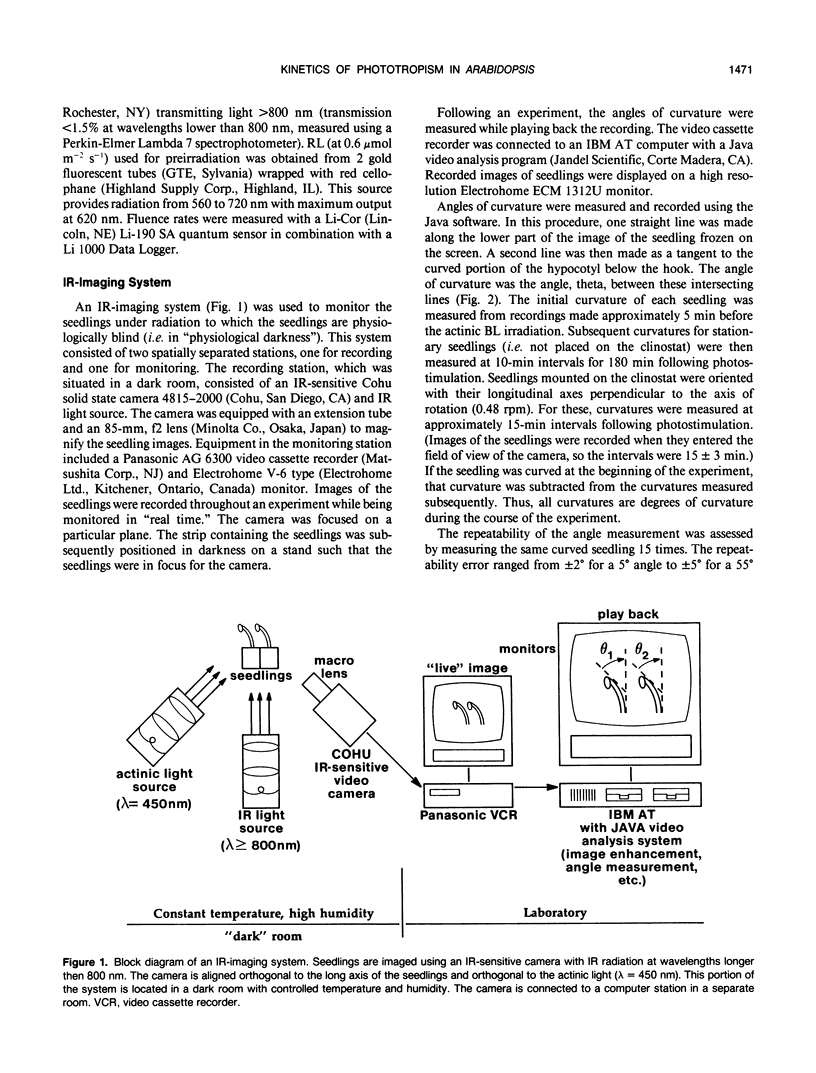
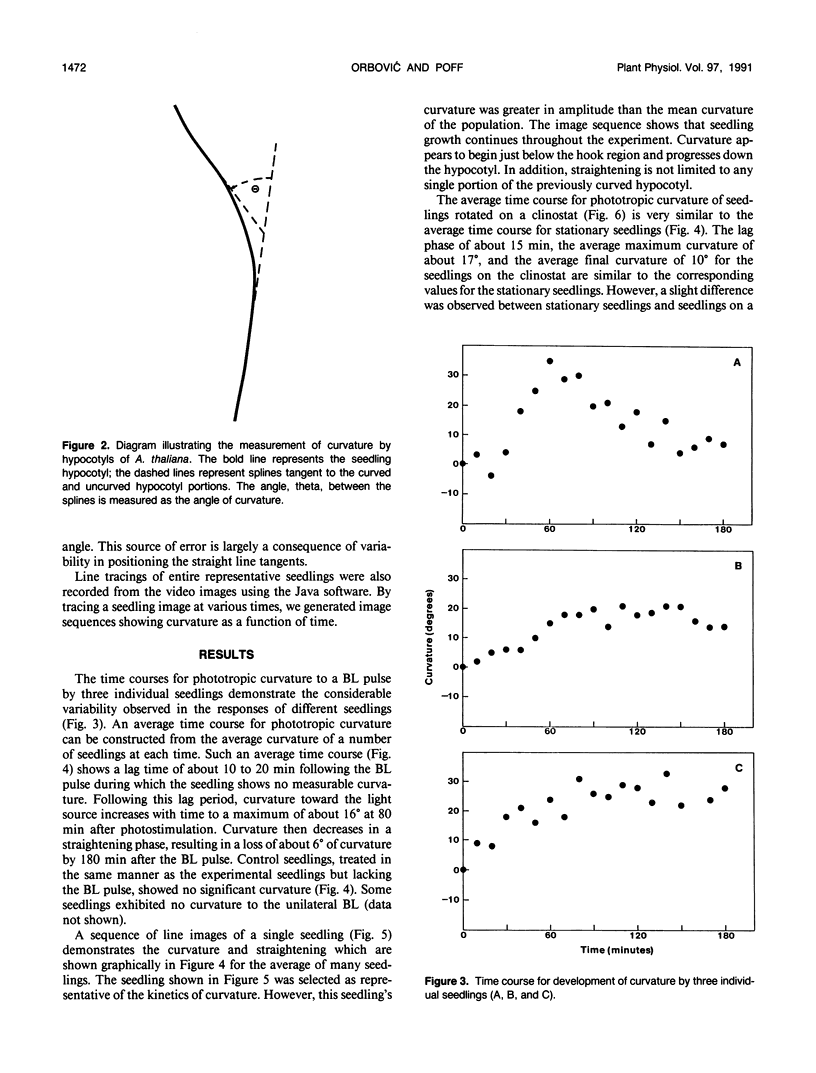
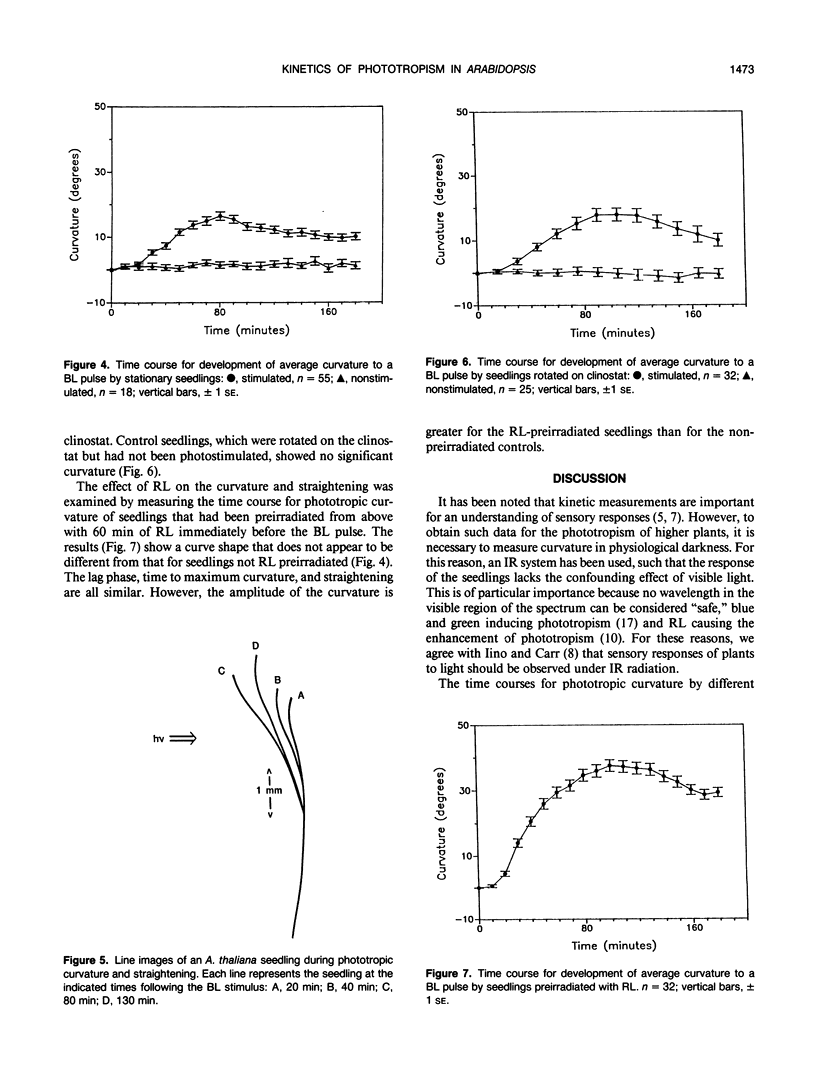
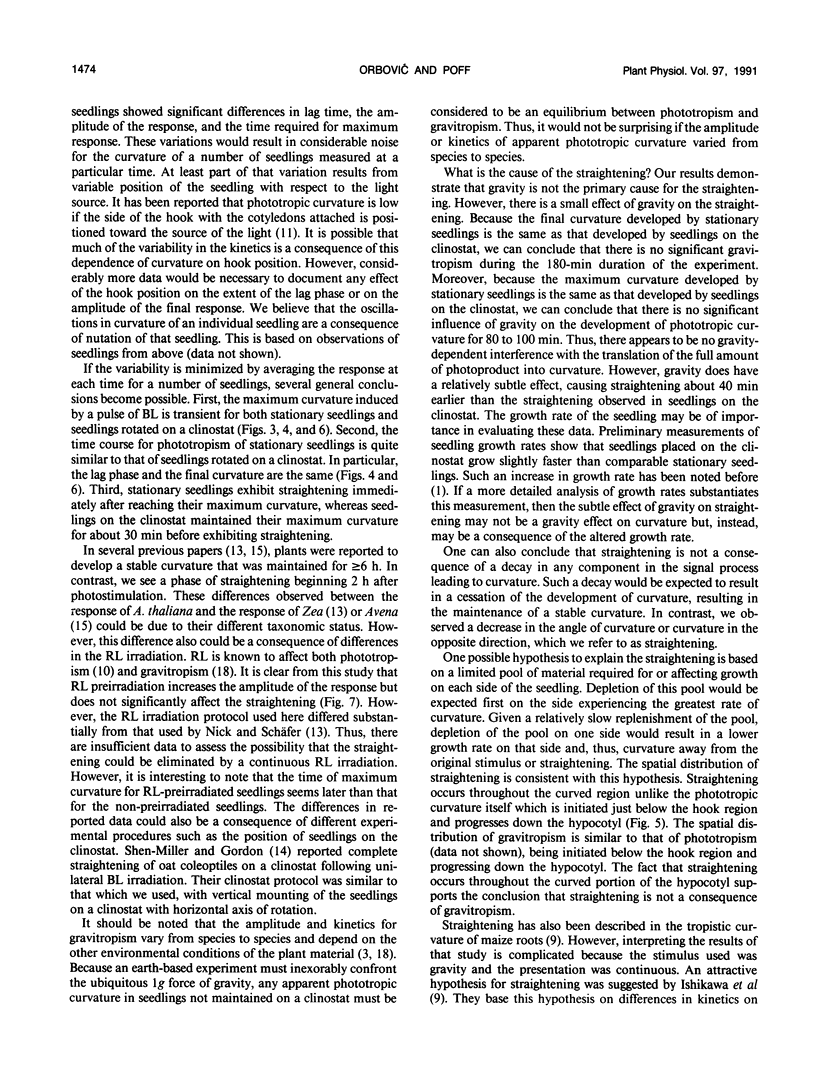
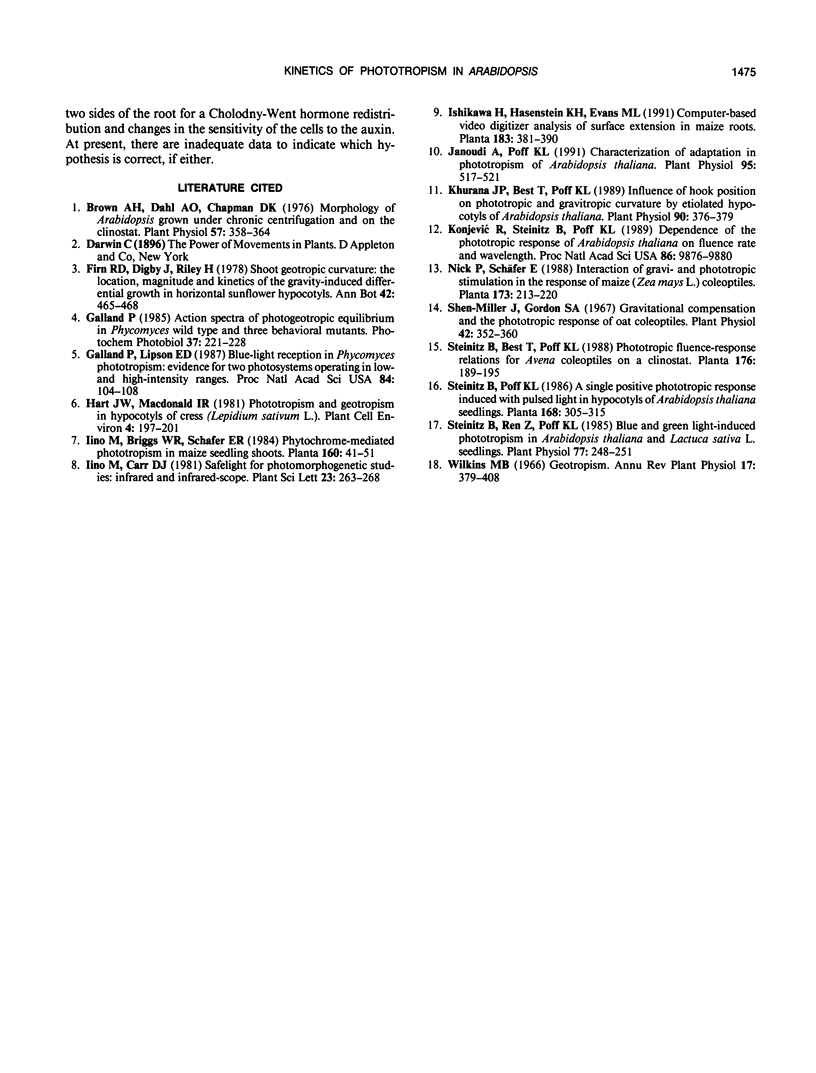
Selected References
These references are in PubMed. This may not be the complete list of references from this article.
- Brown A. H., Dahl A. O., Chapman D. K. Morphology of Arabidopsis Grown under Chronic Centrifugation and on the Clinostat. Plant Physiol. 1976 Mar;57(3):358–364. doi: 10.1104/pp.57.3.358. [DOI] [PMC free article] [PubMed] [Google Scholar]
- Galland P., Lipson E. D. Blue-light reception in Phycomyces phototropism: evidence for two photosystems operating in low- and high-intensity ranges. Proc Natl Acad Sci U S A. 1987 Jan;84(1):104–108. doi: 10.1073/pnas.84.1.104. [DOI] [PMC free article] [PubMed] [Google Scholar]
- Ishikawa H., Hasenstein K. H., Evans M. L. Computer-based video digitizer analysis of surface extension in maize roots: kinetics of growth rate changes during gravitropism. Planta. 1991 Feb;183(3):381–390. doi: 10.1007/BF00197737. [DOI] [PubMed] [Google Scholar]
- Janoudi A-K, Poff K. L. Characterization of adaptation in phototropism of Arabidopsis thaliana. Plant Physiol. 1991;95:517–521. doi: 10.1104/pp.95.2.517. [DOI] [PMC free article] [PubMed] [Google Scholar]
- Khurana J. P., Best T. R., Poff K. L. Influence of hook position on phototropic and gravitropic curvature by etiolated hypocotyls of Arabidopsis thaliana. Plant Physiol. 1989;90:376–379. doi: 10.1104/pp.90.2.376. [DOI] [PMC free article] [PubMed] [Google Scholar]
- Konjević R., Steinitz B., Poff K. L. Dependence of the phototropic response of Arabidopsis thaliana on fluence rate and wavelength. Proc Natl Acad Sci U S A. 1989 Dec;86(24):9876–9880. doi: 10.1073/pnas.86.24.9876. [DOI] [PMC free article] [PubMed] [Google Scholar]
- Nick P., Schafer E. Interaction of gravi- and phototropic stimulation in the response of maize (Zea mays L.) coleoptiles. Planta. 1988 Feb;173(2):213–220. doi: 10.1007/BF00403013. [DOI] [PubMed] [Google Scholar]
- Shen-Miller J., Gordon S. A. Gravitational compensation and the phototropic response of oat coleoptiles. Plant Physiol. 1967 Mar;42(3):352–360. doi: 10.1104/pp.42.3.352. [DOI] [PMC free article] [PubMed] [Google Scholar]
- Steinitz B., Ren Z., Poff K. L. Blue and Green Light-Induced Phototropism in Arabidopsis thaliana and Lactuca sativa L. Seedlings. Plant Physiol. 1985 Jan;77(1):248–251. doi: 10.1104/pp.77.1.248. [DOI] [PMC free article] [PubMed] [Google Scholar]


